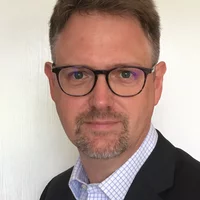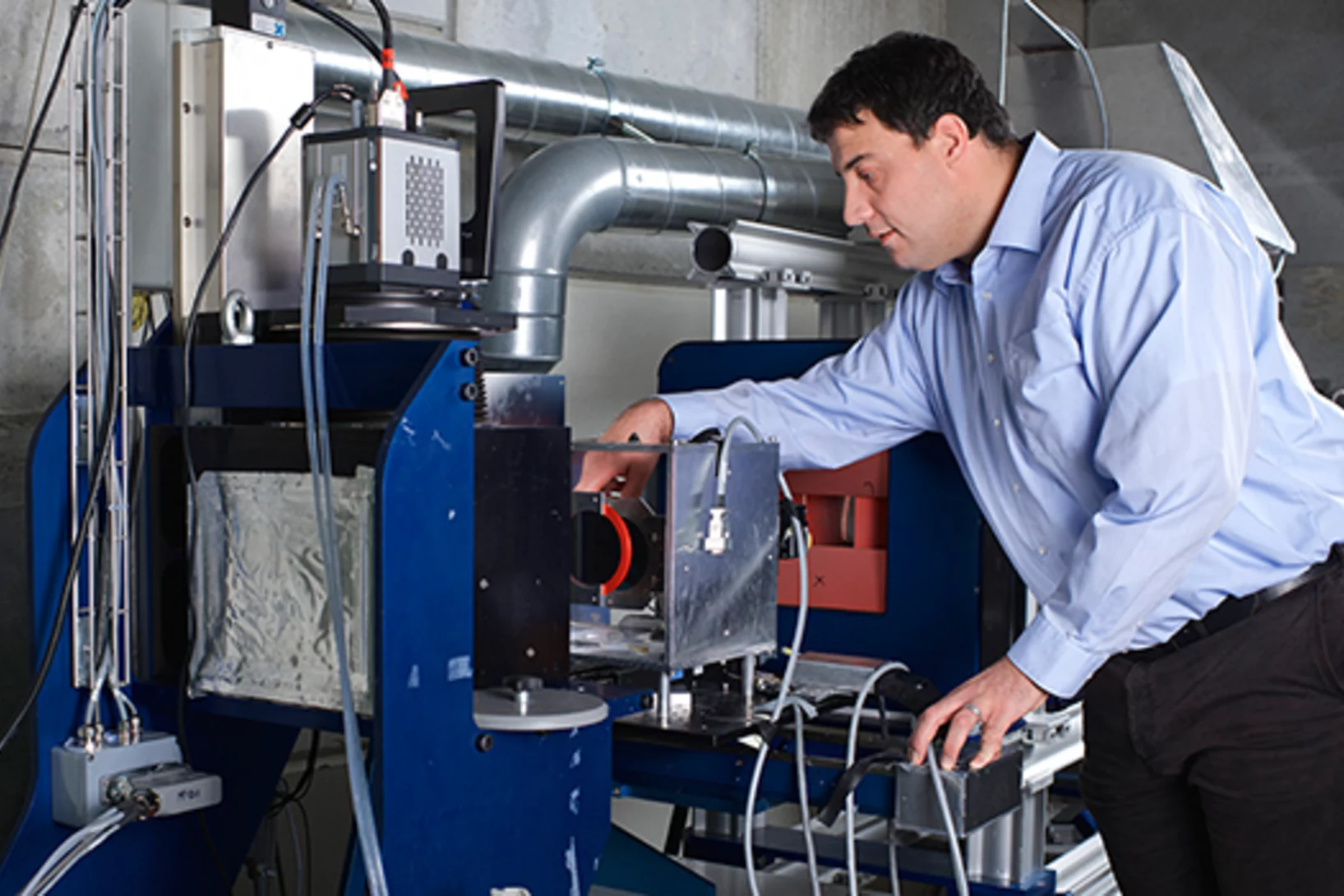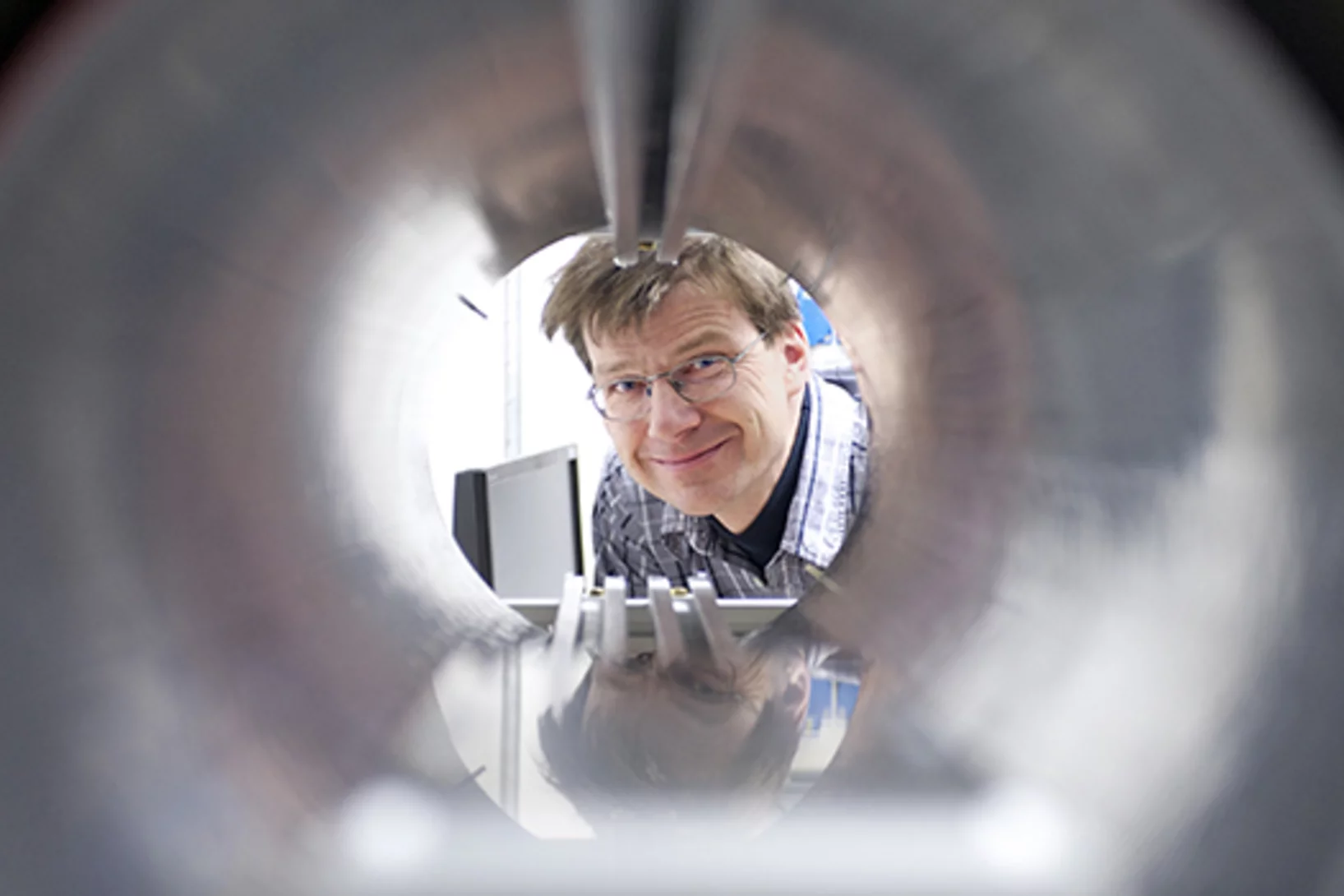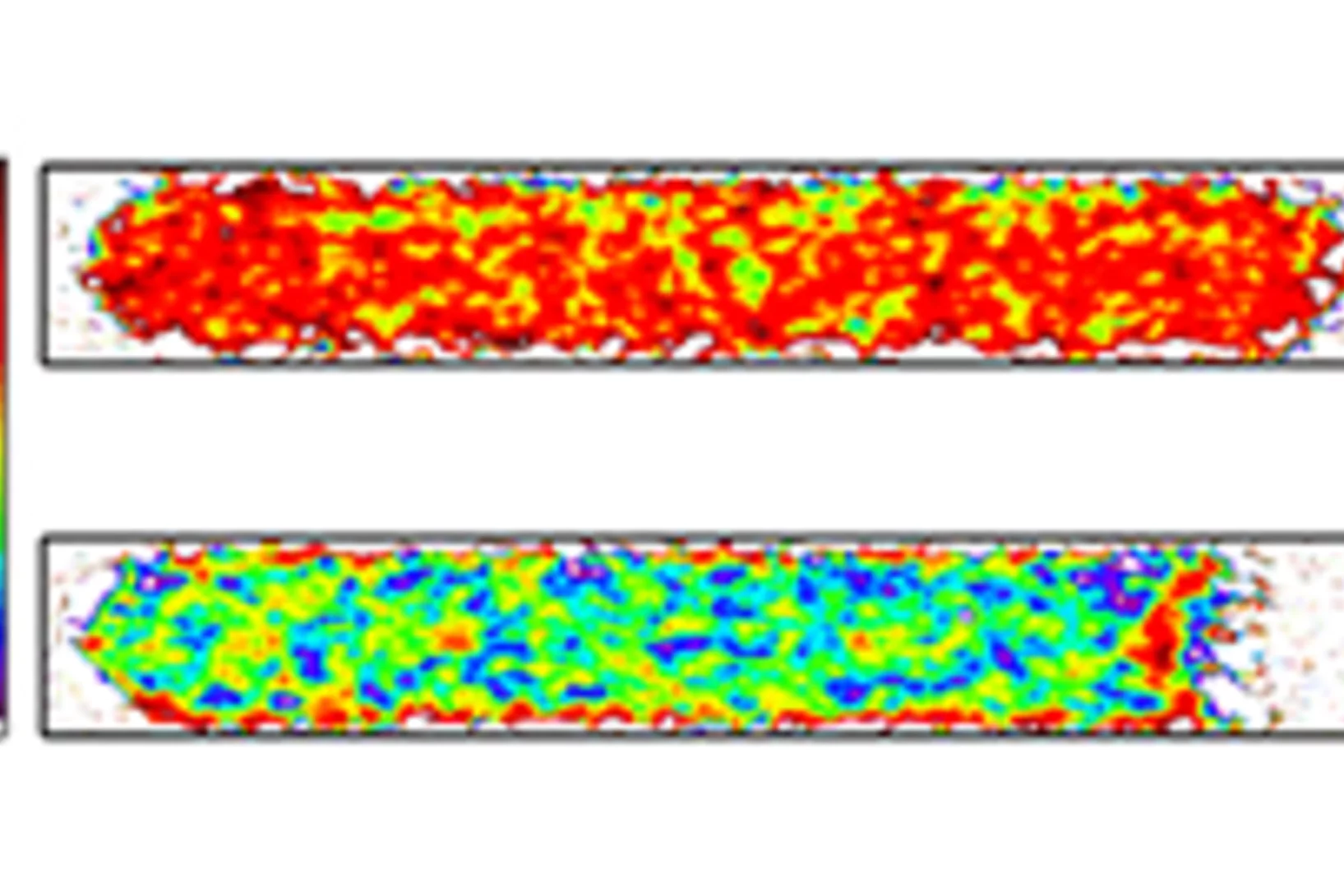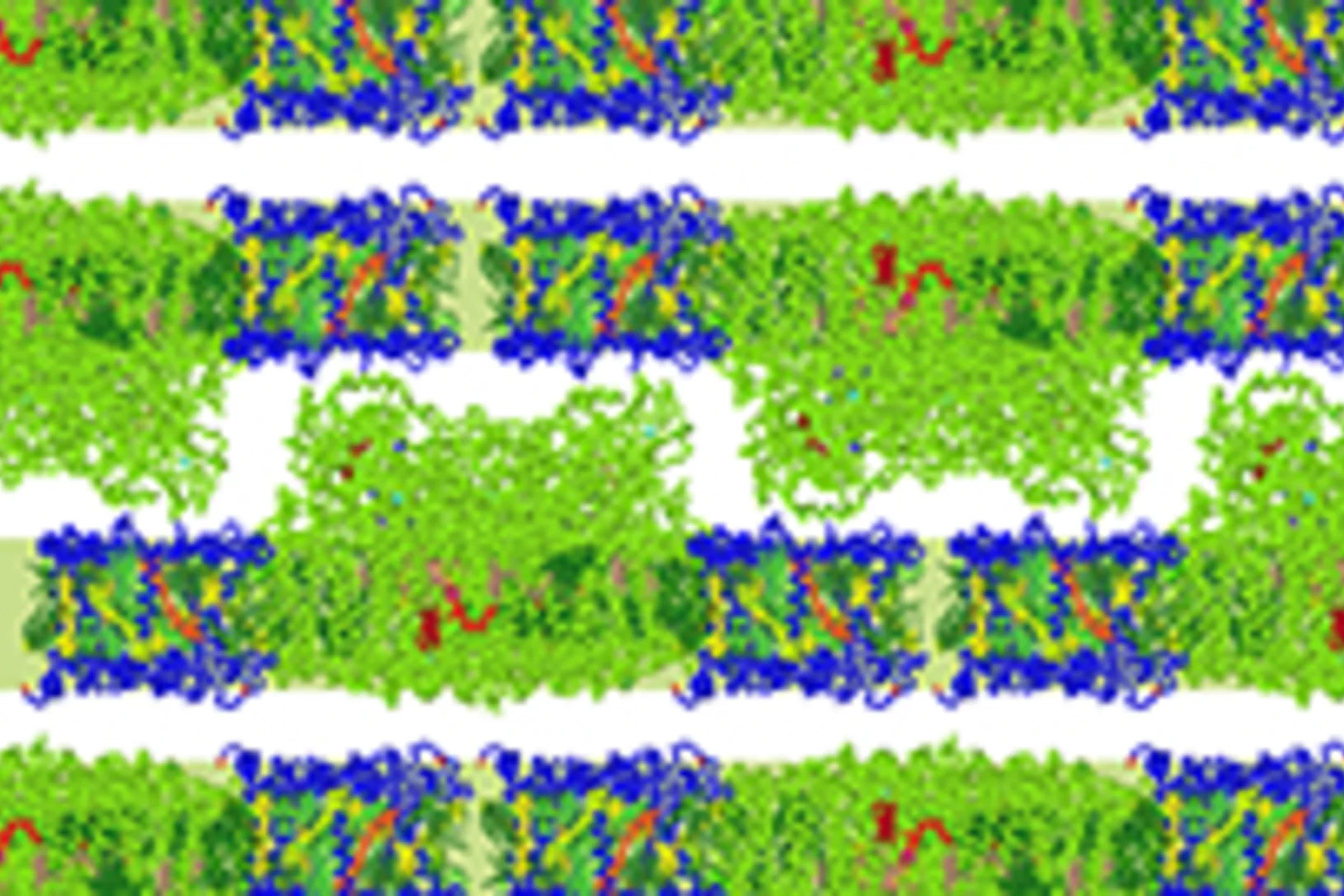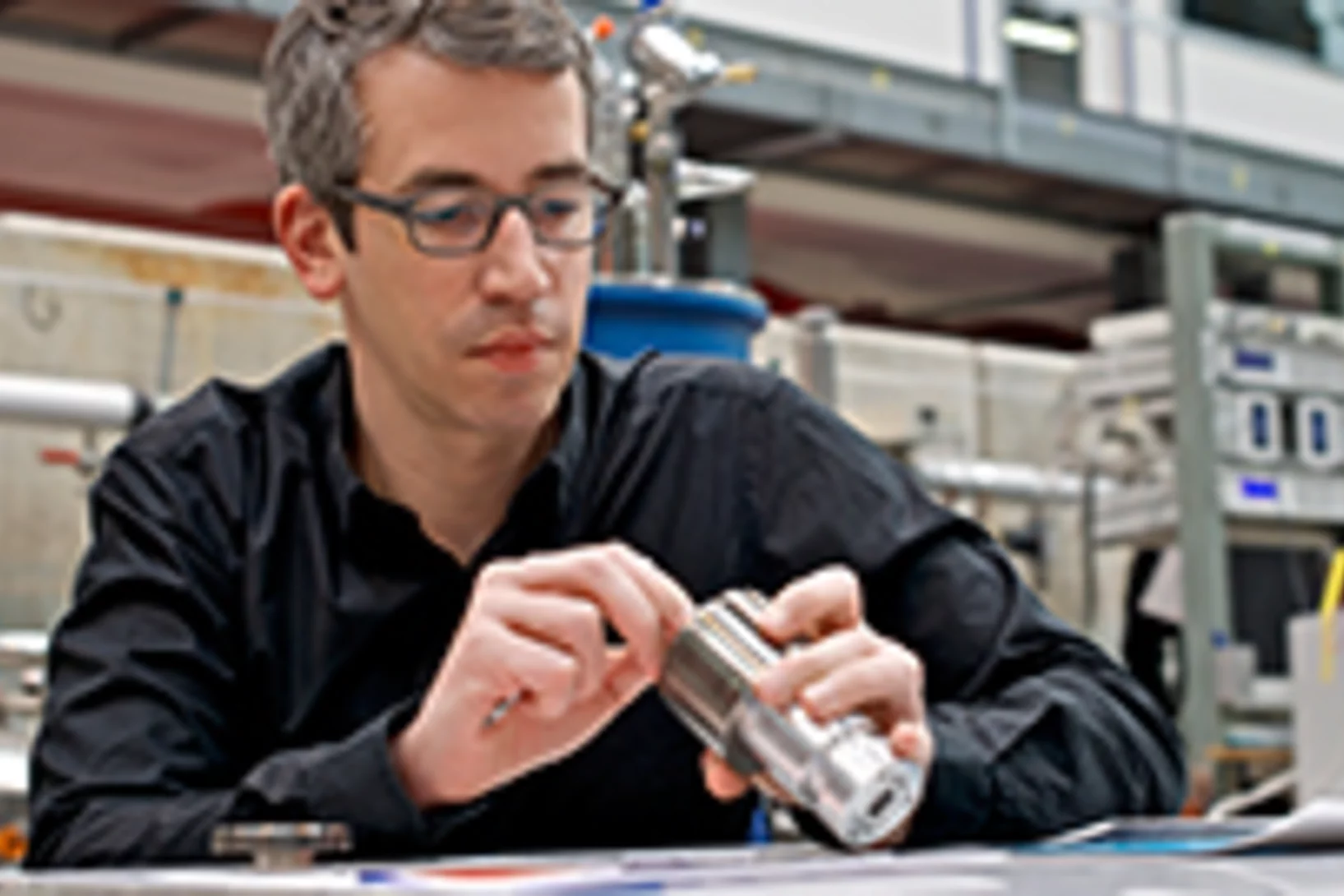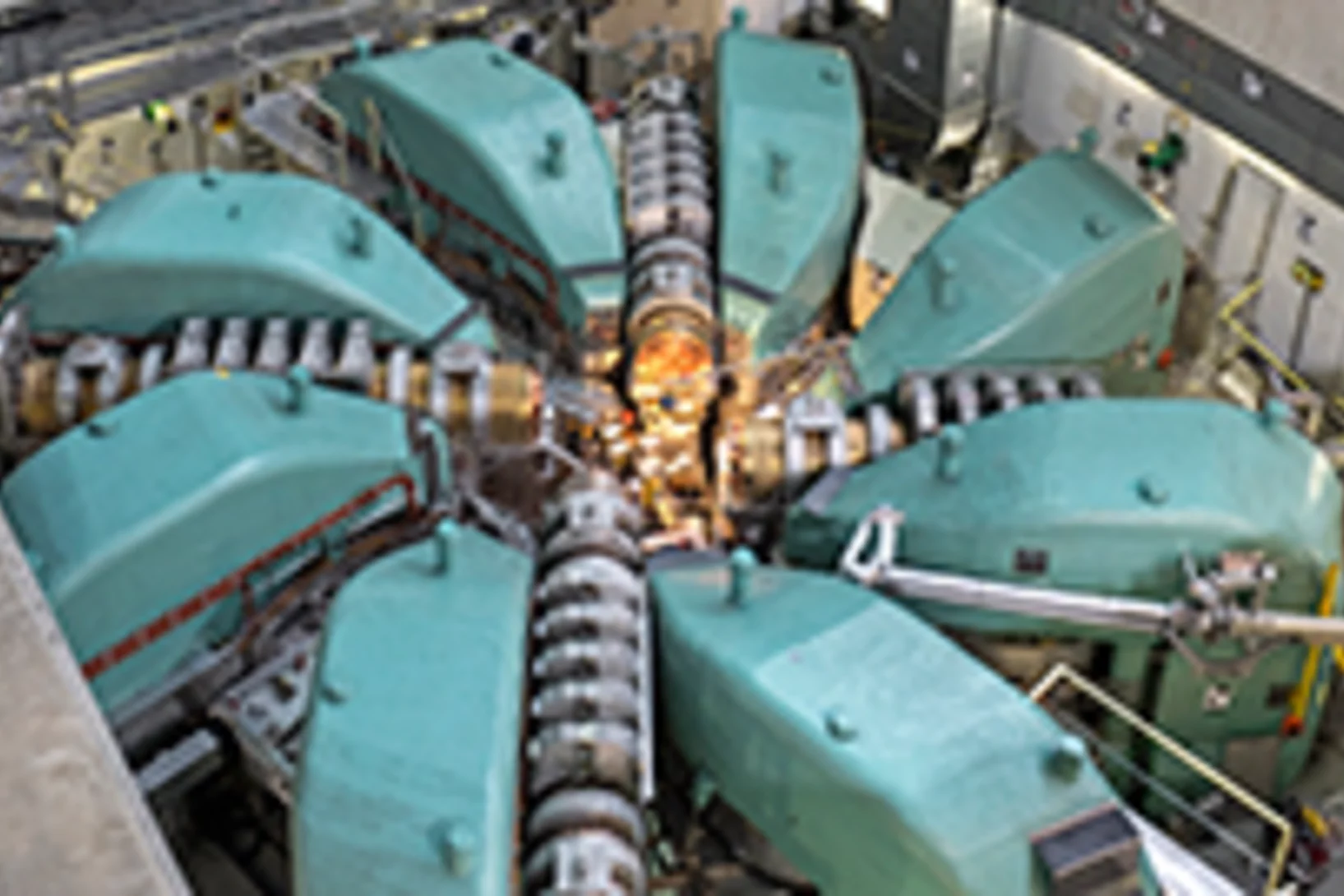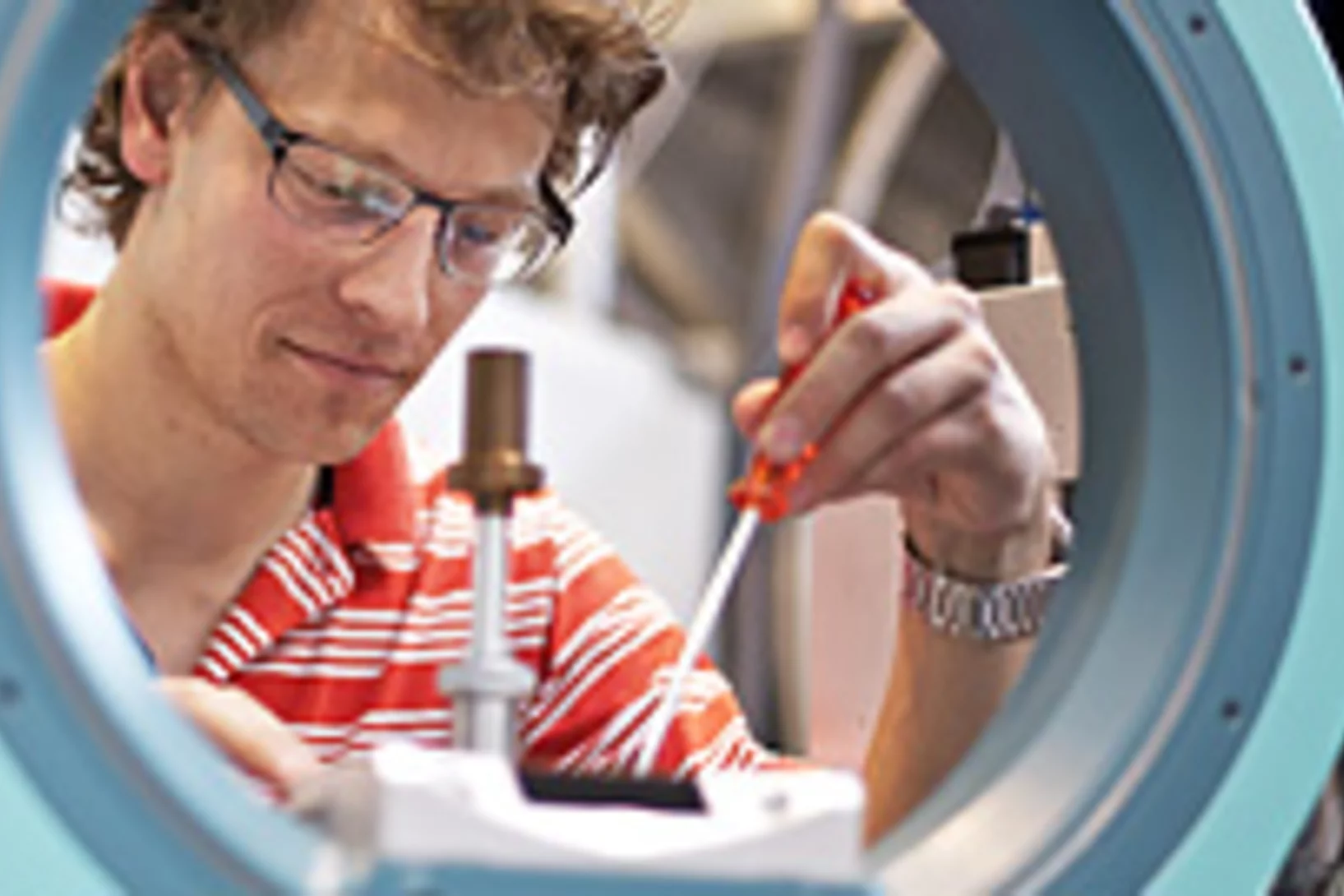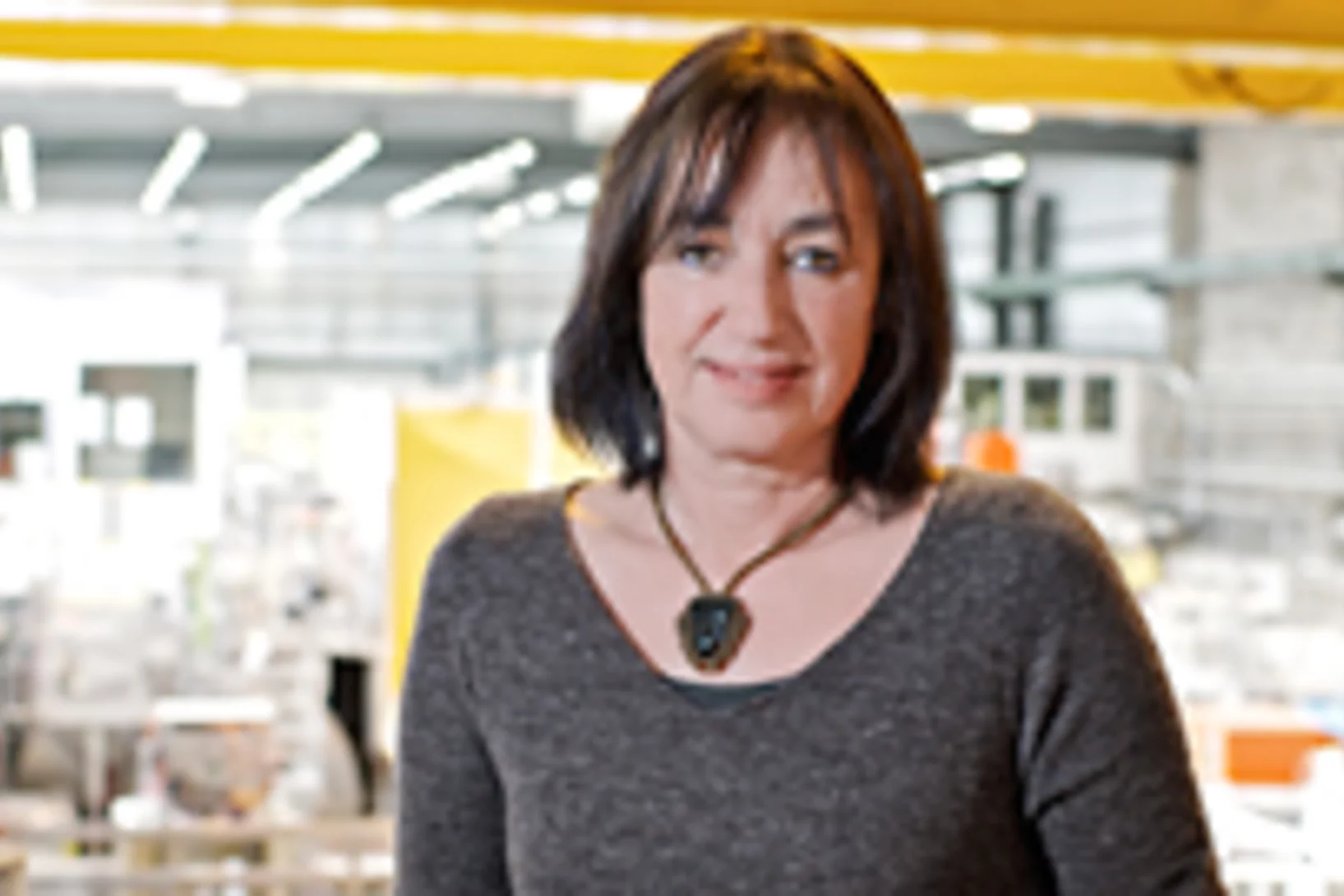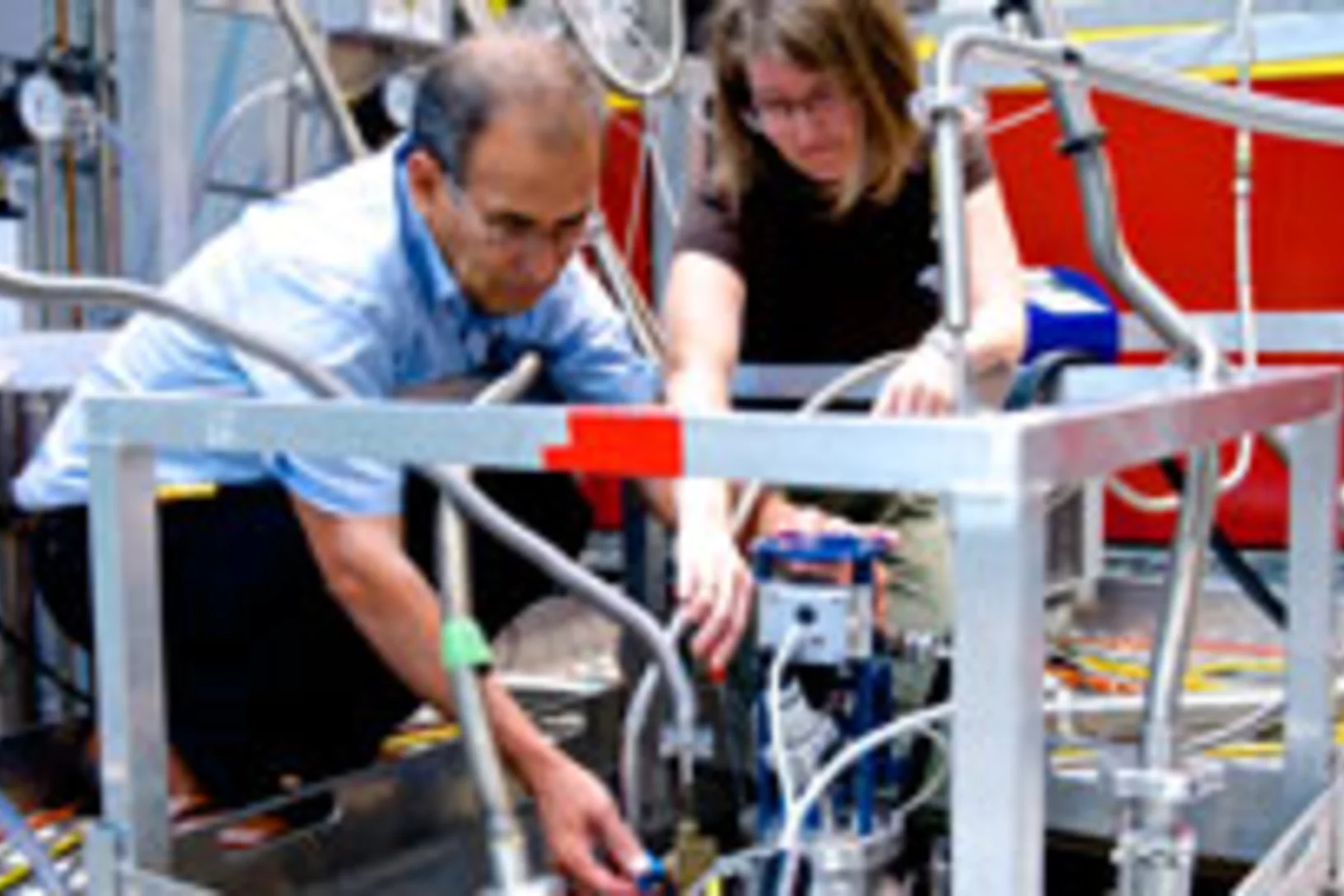SINQ
Neutrons reveal distribution of flux-tube islands
Usually, superconductors expel magnetic fields. In type II superconductors, however, thin channels – so-called flux tubes – are formed. The magnetic field is guided through these tubes while the rest of the material remains field-free and superconducting. In the metal niobium, the flux tubes bunch together into small islands that create complex patterns similar to those found in other fields of nature. A team of researchers from PSI and TU München were the first to conduct neutron experiments to study these patterns in niobium and determine the distribution of the islands in detail.
New method will enable most accurate neutron measurement yet
Our universe consists of significantly more matter than existing theories are able to explain. This is one of the great puzzles of modern science. One way to clarify this discrepancy is via the neutron’s so-called electric dipole moment. In an international collaboration, researchers at PSI have now devised a new method which will help determine this dipole moment more accurately than ever before.
Foundation Stone Ceremony Marks Scientific Importance of ESS
Today, several hundred members of the European scientific community gathered at the European Spallation Source (ESS) construction site in Lund, Sweden, for the ESS Foundation Stone Ceremony. The event was held to lay the foundation’ both for the new facility, which has recently begun construction, and for a new generation of science in Europe.
Ice in fuel cells imaged directly for the first time
Researchers from the Paul Scherrer Institute (PSI) have succeeded in imaging the distribution of frozen and liquid water in a hydrogen fuel cell directly for the first time. They applied a new imaging technique that uses successively two beams with different neutron energies to distinguish between areas with liquid water and those with ice extremely reliably. The method therefore opens up the prospect of studying one of the main problems of using fuel cells to power vehicles: ice can clog the pores in the fuel cells and affect their performance. The PSI scientists’ results will be published in the journal Physical Review Letters on 16 June 2014.
New insight into photosynthesis
The way that algae and plants respond to light has been reinterpreted based on results from recent experiments. Under particular lighting conditions during photosynthesis, the well-ordered stacking and alignment of light-sensitive membranes in the algae are disrupted. There is no significant movement of the membrane embedded light harvesting proteins, which rather become largely inactive. These new findings challenge widely accepted views of how algae respond to light where the light harvesting proteins were thought to move around the membranes.
Quantum melting
Changes to the aggregate state triggered by quantum effects à in physically correct terms, quantum phase transitions à play a role in many astonishing phenomena in solids, such as high-temperature superconductivity. Researchers from Switzerland, Great Britain, France and China have now specifically altered the magnetic structure of the material TlCuCl3 by exposing it to external pressure and varying this pressure. With the aid of neutrons, they were able to observe what happens during a quantum phase transition, where the magnetic structure melts quantum-physically.
The proton accelerator at the Paul Scherrer Institute: forty years of top-flight research
Materials research, particle physics, molecular biology, archaeology à for the last forty years, the Paul Scherrer Institute’s large-scale proton accelerator has made top-flight research possible in a number of different fields.
Superconductivity switched on by magnetic field
Superconductivity and magnetic fields are normally seen as rivals à very strong magnetic fields normally destroy the superconducting state. Physicists at the Paul Scherrer Institute have now demonstrated that a novel superconducting state is only created in the material CeCoIn5 when there are strong external magnetic fields. This state can then be manipulated by modifying the field direction. The material is already superconducting in weaker fields, too. In strong fields, however, an additional second superconducting state is created which means that there are two different superconducting states at the same time in the same material.
PSI-researcher Helena Van Swygenhoven awarded prestigious ERC Grant
Helena Van Swygenhoven, materials researcher at the Paul Scherrer Institute and professor at the Swiss Federal Institute of Technology in Lausanne (EPFL), has been awarded an ERC Advanced Grant. This prestigious EUR 2.5 million grant from the European Research Council will enable Van Swygenhoven to launch the new research project MULTIAX. Under this project, she will investigate what happens in metallic materials during deformation - a question important for the production processes for car parts. Furthermore, the project will also develop new methods that can be used to study materials at large research facilities. These methods will be accessible to experts from research and industry.
Towards sodium ion batteries – understanding sodium dynamics on a microscopic level
Understanding sodium dynamics on a microscopic levelLithium ion batteries are highly efficient, But there are drawbacks to the use of lithium: it is expensive and its extraction rather harmful to the environment. One possible alternative might be to substitute lithium with sodium. To be able to develop sodium-based batteries, it is crucial to understand how sodium ions move in the relevant materials. Now, for the first time, scientists at the Paul Scherrer Institute PSI have determined the paths along which sodium ions move in a prospective battery material. With these results, one can now start to think of new and specific ways to manipulate the materials through slight changes to their structure or composition, for example à and thereby achieve the optimized material properties necessary for use in future batteries.
